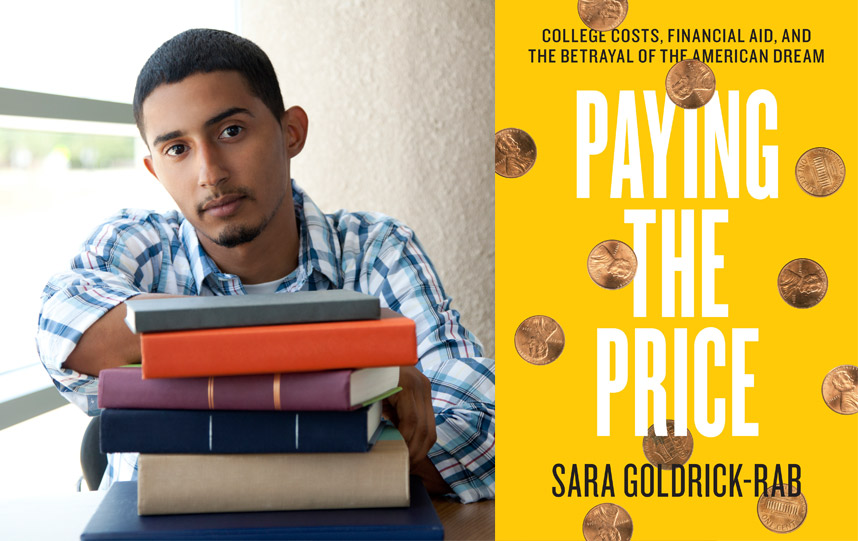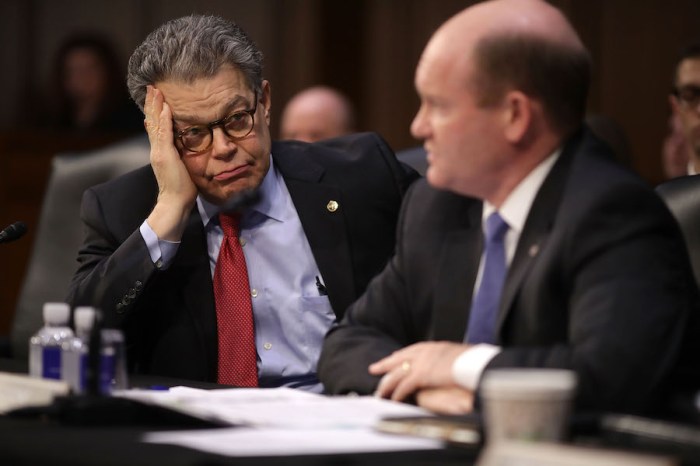Tuesday night’s bartending shift ends at 2 a.m., giving Androniqi Kurtezi just enough time to review her notes, shower, and sneak in a four hour “power nap” on the couch before her 9 a.m. organic chemistry class. The 21-year-old senior, attending New York’s SUNY New Paltz, plans on graduating this spring with a degree in biochemistry, only to begin another gritty stage: medical school applications. After filling out financial aid forms for the past three years, she’s gotten used to paperwork.
However, this year’s aid, $1,300, is not nearly enough to cover her close to $10,000 room and board expenses. To make up the difference, she’s been working 25 hours a week while taking seven classes, a culmination, she jokes, that’s caused her to spend most of her days “half awake and feeling mentally deranged.” Like many students, Kurtezi has witnessed firsthand the shortcomings of our nation’s financial aid system.
Not only have college prices risen dramatically in the past 15 years, explains Sara Goldrick-Rab, a professor of higher education policy and sociology at Temple University and author of a new book about college costs, “Paying the Price,” but at the same time, the mean family income of all but the wealthiest 5 percent of Americans has fallen or stagnated. “They’re giving students such a small amount of money, pennies, really, and other people who don’t get anything are assuming they’re getting tons of money and it’s covering their needs,” says Goldrick-Rab. “Except it’s not.” In the book, she describes that after factoring in state and institutional grants, students from families earning an average of $20,000 a year are required to pay at least $8,000 a year for community college and more than $12,000 a year at public university. Middle class families are also struggling, she explains, considering they have a real financial need and still are getting no help. A year of college at a public university runs a family earning $80,000 a year just over $20,000. The result: Many students end up accruing an overwhelming amount of debt, or worse, dropping out.
The consequences are more disheartening for low income students who, without enough financial assistance, are forced to abandon their degree and watch their only shot at upward mobility crumble. For six years, Goldrick-Rab followed a group of 3,000 low income young adults who entered college with the support of federal aid and Pell Grants. She watched as they struggled to stay afloat with school work and outside jobs, worked tirelessly, in some cases, to support their parents, and even went without adequate food or housing. By the end of the study, half of them were forced to leave college without a degree. It was a vicious cycle, echoed in part by Kurtezi’s own experience.
“I’m not getting enough money to pay for school, so I take more hours at work so I can afford it, but if I take on too many shifts, then I don’t have enough time to study and my grades drop, and if they drop too low, then I can lose my grant,” says Kurtezi. “It’s a situation where no matter what, you can’t win.”
“And yet, we have the hubris to blame students for not being able to manage themselves, to make a good budget, to study hard enough,” says Goldrick-Rab. “I watched all of these students and I swear, nobody is working harder than them. It’s so wrong to characterize them like they’re not trying their very best.” But Kurtezi is already so close to the finish line– an accomplishment that will allow her to pursue her dream career, and eventually, support her mom and dad, a school lunch aide and construction worker who’ve been struggling financially for years. “I’ve always wanted to be a doctor so I could give back to my community,” says Kurtezi, “but I also want to give back to my parents.”
“It’d be amazing to be able to build a life for them where they don’t have to constantly worry about money.”
The real cost of higher education

Since 2000, the cost of community college and private universities has gone up by 28 and 54 percent, respectively. In the meantime, she explains, the amount of financial aid has barely fluctuated, noting that the Pell Grant — a government award intended to help those whose families make less than $30,000 a year — has remained between $4,000 to $5,000 for the past 15 to 20 years.
This article was originally published on November 18, 2016.


















